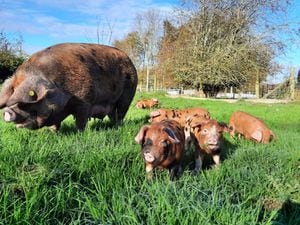New rules in England to protect water quality
From April 2 a new set of farming rules for water will be introduced to help protect water quality by standardising good farm practices, many of which are already being performed.

The aim is to help protect water quality and also save farmers money by the efficient use of fertilisers and soil management.
The rules require farmers to keep soil on the land; match nutrients to crop and soil needs; and keep livestock fertilisers and manures out of the water.
These new rules will apply to all farmers in England, and have similarities to the rules that are already in place in Nitrate Vulnerable Zones. However, farmers will also be required to test their soils at least every five years, in order to plan what nutrients each specific field requires to meet crop needs. The aim, of course, is to ensure fertilisers are effectively used, which will save money in the long run but also reduce the risk of run-off into watercourses.
There are eight rules, five about managing fertilisers and manures and three on managing soils:
Rule 1: planning use of manures and fertilisers. Planning of manure and fertiliser applications to take account of fields and conditions that carry a ‘significant risk of pollution’, and also following the results of the soil testing for phosphorous, potassium, magnesium, pH and nitrogen levels, which must be done at least every five years.
2: storing organic manures. Muck heaps mustn’t be sited within 50 metres of a spring, well or borehole or within 10 metres of inland freshwaters or coastal waters or where there is risk of pollution entering waters.
3: applying manures or fertilisers. Manures and fertilisers must not be applied if the soil is waterlogged, flooded, or snow covered, if the soil has been frozen for more than 12 hours in the previous 24 hours or if there is significant risk of causing pollution
4: where not to apply organic manures. Manure must not be applied within 50 metres of a spring, well or borehole or within 10 metres of any inland freshwaters or coastal waters, or within six metres of inland freshwaters or coastal waters if precision equipment is used
5: where not to apply fertiliser. Fertiliser must not be applied within two metres of inland freshwaters or coastal waters.
6: reasonable precautions to prevent soil erosion. In addition to meeting these rules, reasonable precautions must also be taken to prevent soil erosion and run off through land management and cultivation practices.
7: protecting against soil erosion by livestock. Any land within five metres of inland fresh or coastal waters must be protected from soil erosion by preventing poaching by livestock.
8: position of livestock feeders. Livestock feeders must not be positioned within 10 metres of any inland freshwaters or coastal waters or within 50 metres of a spring, well or borehole or where there is risk of poaching.
These water rules are part of a whole package of measures which aim to help farmers and land managers protect the environment.
Sarah Wedge, land agent with Davis Meade Property Consultants at Oswestry.





